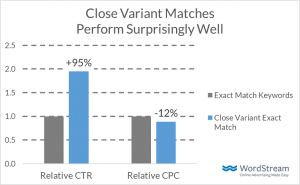— July 5, 2019
As organizations struggle to get the right talent to the right place at the right time, Recruitment Process Outsourcing (RPO) is improving the odds of hiring and retaining top talent. From improving the strategic hiring focus to matching individual career goals to the goals of the organization, RPO is helping set a new standard for long-term workforce value.
Within this context, Aberdeen has concluded that there can be little doubt left about the value-add of partnering with a RPO provider. A recent survey showed that for every 1% increase in the likelihood that companies will expand their spend on RPO, they increase the likelihood of reducing employee turnover by 47%. By comparison, traditional recruiting and staffing leads to an increase in this likelihood of only 28%. RPOs go beyond the value proposition of expanded talent pools to provide guidance around best practices for recruitment and retention — and the strategies that facilitate them.
How Are the Best-in-Class Recruiting Top Talent?
Aberdeen has found that Best-in-Class companies are 74% more likely than All Others (40% vs. 23%) to develop tighter internal integrations between their internal talent acquisition ecosystem and the one that supports talent acquisition. At the same time, Aberdeen found that technology spend on talent acquisition resources now outstrips spend on performance management technology by a ration of up to 2 to 1.
While front-loading talent acquisition like this has helped to populate talent pipelines and gather more information on potential candidates, 29% of Best-in-Class companies have found that they are losing track of what defines their talent market while 26% find that they are unable to construct and sustain talent pipelines. Another 59% of the Best-in-Class find that they are unable to recruit top-quality talent and they still do not know precisely why.
The integration of performance data into talent acquisition means that the market is finally on the precipice of looking at all-encompassing talent placement that no longer differentiates between front-end acquisition and back-end management. Before the technology space gets to this point, however, managers and HR need strategic help on how to change their mindsets on how talent is processed, engaged, and managed within the organization. Doing this in reverse is saddling the average firm in Aberdeen’s data-sets with up to four recruitment, sourcing, and candidate processing solutions with data management and metric analysis centered on the applicant tracking system (ATS).
RPO Improves Talent Placement
While RPO is not a replacement overall, it is a strategic partner that helps re-align the internal needs of the organization to the external demands of the market for candidates. As subject-matter-experts (SMEs) in sourcing and recruiting based on where internal metrics meet the outside metrics of the general market for talent, RPOs are in a unique position to guide the transformation of the talent strategy away from siloed talent acquisition and performance management to one of integrated talent placement.
The Best-in-Class are taking note that their short-term needs are not feeding into their long-term goals for talent retention and goals alignment. In fact, the they are 3x more likely than All Others (75% vs. 25%) to be implementing new strategies that link candidate hiring profiles into broader performance management. For 51% of Best-in-Class firms, this strategy evolution has been directly guided, influenced, and facilitated by their partnership with an RPO.
Today, Best-in-Class companies are 17% more likely than All Others (68% vs. 58%) to engage an RPO to rectify the shortcomings of their talent placement strategies, and to take corrective action on low-grade recruitment. Organizations that use RPOs achieve a 1.8x greater likelihood that they are able to drive higher average tenure among incoming employees (50% vs. 30%).
Where the high-end average retention for non-RPO users sits between 3 and 5 years, for RPO users, the low-end average sits between 4 and 8 years. The Best-in-Class are also 4.1x more likely than All Others (98% vs. 24%) to have realized increases in revenue per FTE in the last 12 months with increased productivity directly driven by longer tenure and higher employee engagement rates.
As the old methodology of internal recruitment strategies disconnects from the changing worlds of work and talent, organizations need all the help they can get to stay ahead of a market that more than 65% of them admit they no longer understand. What this means is that the value of engaging an external SME for talent acquisition is only going to increase until employers figure out how to eliminate buyer’s and seller’s markets for talent.
Business & Finance Articles on Business 2 Community
(70)







